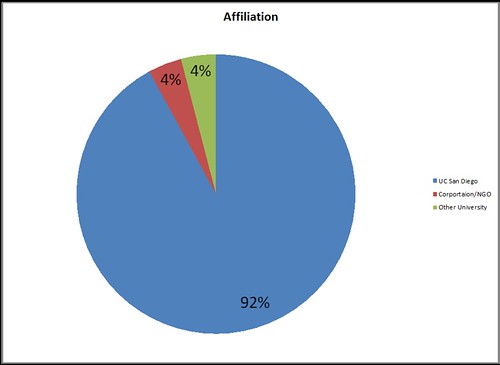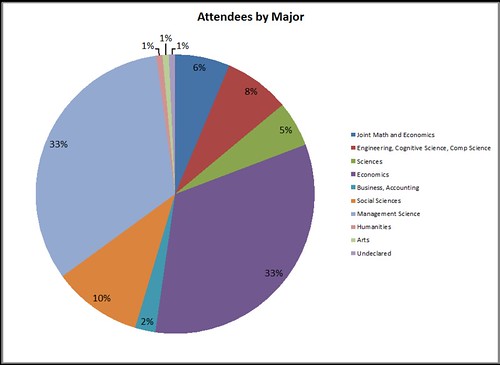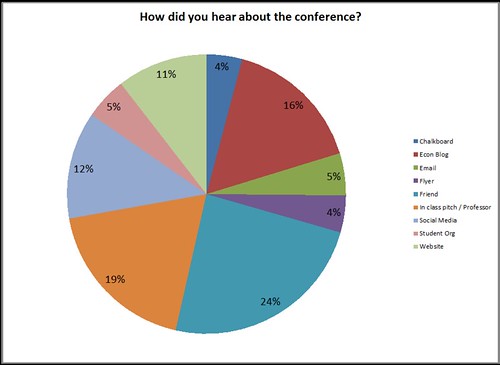Before I get into the details, I have to give a shout out to my friend Edward who partnered with me on this challenge. It is doubtful I would have won without Edward's input and focused execution.
Through my work at InternMatch, I learned that the secret to growth hacking is to try as many things as quickly as possible. For the first couple of days, we ran social media and email marketing campaigns in parallel. Below is a break down of what we did:
On the Social Media Front
On LinkedIn (LI), we targeted property managers by employing a tactic that I had used successfully in the past. The dirty little secret about LI is that if you send an invite to somebody with even the tiniest personalized statement, 70% of the time they will connect with you. After connecting with the person, the plan was to pull their email address from their profile and then solicit them. To execute this campaign, Edward added property management to his LI profile, joined a property management group and just started connecting with the members.For Facebook, we cloned the Apartment List fan page, bought a couple thousand fans off Fiverr and attempted to use the page to drive traffic to the Apartment List sign up page. Acting as the Apartment List page, Edward would go into Facebook groups and pages of property managers and just start liking all the comments. The reasoning behind this tactic was that people would receive notifications saying that Apartment List had liked their comment and out of curiosity they would click through to the Apartment List page to learn more about this random account. Our Apartment List page was optimized to get sign ups, with the link of the registration page pinned to the top and also tabs that would allow someone to register for Apartment List without leaving Facebook. This was a tactic that Edward had successfully used to promote his own startup, so we had high hopes for it.
Around day three, however, we realized that the Growthathon was going to be over before we could reap in any ROI from our social media campaigns. So we scrapped everything and focused all our attention on email.
On the Email Front:
On Saturday, Ben from Apartment List had told me that the company had the most success when reaching out to small brokerages who typically had 5 to 20 rental listings each. I recognized this as our low hanging fruit and scoured the web for some type of brokerage community. When I came upon the National Association of Residential Property Managers website, I knew I had struck gold, and with my trusty Atomic Email Hunter was able to scrape 1600 email addresses.Utilizing an adapted version of the infamous AirBnb email copy, Edward and I split a test batch of 1000 emails using two different methods. Edward sent his emails using a MailChimp and recorded a phenomenal 50% open rate with a batch of 250 emails using the subject “Question about Property.” Unfortunately, something had messed up with the formatting of the emails and so he was only able to garner a 2% CTR. I used a mail merge script with a couple of Gmail addresses, which did not allow me to track open rates, but with the help of bit.ly I was able to calculate a 4% CTR. These were clearly not great numbers and worse, all the clicks died at the Apartment List landing page and after 1000 emails we did not have a single listing or sign up to show for it.
Monday night, I rewrote the copy and Edward fixed his MailChimp formatting problem and we set up a batch of 500 emails to go out Tuesday morning. For the new batch, the results were even worse with a 35% open rate and 0% CTR. On just our third late night work session, we had run out of ideas and were getting burned out.
Breakthrough
On the verge of giving up, I started to think about how I could make the already low barrier to entry even lower. Since Apartment List was free, the only thing standing in between getting on the site and posting a listing was entering in the information. With that in mind, I drafted an email asking people for permission to import their lovely rentals onto Apartment List, effectively reducing the barrier of entry to a 3 character (Y.E.S.) reply.The Winning Copy:
Subject: Question about Rental
Hi,
I wanted to email you because you have a lovely property and with your permission I would like to post it on ApartmentList.com. The site is growing rapidly and already has over 1.2 million visitors a month.
Please respond if you want me to post your listing for you.
- Helen
This email was our Hail Mary pass and we crossed our fingers at 3am on Wednesday before going to sleep. When those Yes emails started coming in ten hours later, I realized we had won the Growthathon.
Edward and I spent the remaining days of the Growthathon entering in the listings that came rolling in. Mind numbing data entry never felt so good.
Closing Thoughts
I walked away from this experience realizing the power of one small detail. There was probably only a one sentence difference between the email that failed miserably and the one that won the Growthathon. Also, the massive amount of fail that we experienced leading up to the winning tactic reminded me that growth hacking is a lot like venture funding. You only need one successful idea to be a winner.Our Growthathon in Numbers:
- Used 13 Gmail addresses
- Created 2 Mail Chimp accounts (1 got banned)
- Received a 38% Bounce rate off 1 bad scrape list
- Sent over 4000 emails
- Posted up 124 rental listings
- Registered 13 Apartment List users































